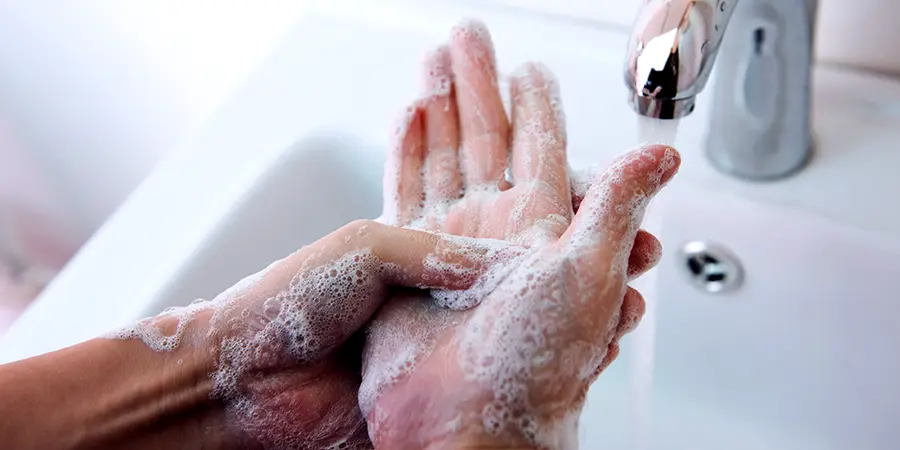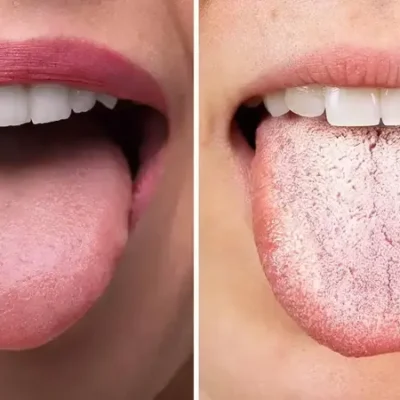Mysophobia, also known as germophobia or verminophobia, is a type of anxiety disorder characterized by an excessive fear of germs, contamination, and uncleanliness. People with mysophobia may engage in obsessive-compulsive behaviors related to cleanliness and hygiene, such as excessive hand washing or avoidance of potentially contaminated objects or environments. While it’s normal to want to stay clean and healthy, mysophobia can significantly impact a person’s daily life and mental well-being. In this blog post, we will explore the causes, symptoms, and treatment options for mysophobia, as well as discuss coping strategies for those living with the condition.
What is Mysophobia?
Mysophobia, also known as germophobia or verminophobia, is a type of anxiety disorder characterized by an excessive and persistent fear of germs, contamination, and uncleanliness. People with mysophobia may experience overwhelming anxiety and distress when exposed to situations or objects they perceive as dirty or contaminated. This can lead to compulsive behaviors related to cleanliness and hygiene, such as excessive hand washing or cleaning. Mysophobia is a clinical diagnosis that requires professional assessment and treatment.
Symptoms of Mysophobia
The symptoms of mysophobia can vary from person to person, but commonly include:
- Obsessive-compulsive behaviors related to cleanliness and hygiene, such as excessive hand washing or cleaning.
- Fear and anxiety related to germs, contamination, and uncleanliness.
- Avoidance of situations or objects perceived as dirty or contaminated, such as public restrooms or used towels.
- Excessive worry or preoccupation with cleanliness and hygiene.
- Difficulty functioning in daily life due to fears and compulsions related to cleanliness and contamination.
- Physical symptoms such as sweating, trembling, or nausea when exposed to germs or unclean objects.
- Ritualistic behaviors related to cleanliness and hygiene, such as checking and re-checking locks or washing hands a certain number of times.
- Impairment of social relationships or work performance due to fears and compulsions related to cleanliness and contamination.
- Distress related to fears of contamination that cannot be alleviated through logical reasoning or reassurance.
It’s important to note that not all people with mysophobia will experience all of these symptoms, and that the severity of symptoms can vary from person to person.
Related article: Yoga Poses for Lower Back Pain: How to Get Started
The difference between Mysophobia and germaphobia
While the terms “mysophobia” and “germaphobia” are often used interchangeably, there is a subtle difference between the two. Mysophobia is a specific clinical diagnosis that describes a set of symptoms and behaviors related to an excessive fear of germs and contamination, which can lead to compulsive behaviors related to cleanliness and hygiene. On the other hand, “germaphobia” is a more informal term used to describe an extreme aversion or fear of germs, often used in everyday language to describe someone who is overly concerned with cleanliness or hygiene. In essence, germaphobia is a more colloquial term that describes a general aversion to germs, whereas mysophobia is a clinical diagnosis that requires professional assessment and treatment.
What causes Mysophobia?
The exact cause of mysophobia is not fully understood, but research suggests that it may be influenced by a combination of genetic and environmental factors.
Genetic factors:
Some studies have suggested that there may be a genetic component to mysophobia. For example, a 2014 study published in the Journal of Anxiety Disorders found that individuals with mysophobia were more likely to have a family history of anxiety disorders.
Traumatic experiences:
Traumatic experiences, such as a serious illness or exposure to a contagious disease, may trigger the onset of mysophobia in some individuals. For example, someone who becomes seriously ill as a child may develop a fear of germs and contamination as a result.
Comorbidity with other mental health conditions:
Mysophobia is often diagnosed alongside other mental health conditions, such as obsessive-compulsive disorder (OCD) or generalized anxiety disorder. In fact, the symptoms of mysophobia and OCD can be very similar, and some experts believe that mysophobia may actually be a subtype of OCD.
It’s important to note that not all people with mysophobia will have experienced a traumatic event or have a family history of anxiety disorders. Additionally, not all people with OCD or other mental health conditions will develop mysophobia. The development of mysophobia is likely influenced by a complex interplay of genetic and environmental factors.
Is Mysophobia a type of OCD?
Obsessive-compulsive disorder (OCD) is a mental health condition characterized by intrusive thoughts, images, or urges (obsessions) that are often followed by repetitive behaviors or mental acts (compulsions) intended to reduce anxiety or prevent harm. Mysophobia shares many similarities with OCD, leading some experts to believe that it may actually be a subtype of OCD.
How Mysophobia is related to OCD:
Mysophobia is often characterized by a fear of contamination and germs, which can lead to compulsive cleaning and sanitizing behaviors. Similarly, OCD often involves obsessions and compulsions related to cleanliness and contamination, such as excessive hand-washing or avoiding certain objects or places. Both conditions can also be triggered by a specific traumatic event, and may co-occur with other mental health conditions.
Differences between Mysophobia and OCD:
Despite the similarities, there are some key differences between mysophobia and OCD. For example, while OCD is characterized by a range of obsessive and compulsive behaviors, mysophobia is typically focused on a specific fear of germs or contamination. Additionally, the severity of symptoms can vary between individuals, and some people with mysophobia may not have any other symptoms of OCD. However, given the overlap between the two conditions, it’s not uncommon for people with mysophobia to also have OCD or other anxiety disorders.
Overall, while mysophobia and OCD share some similarities, they are distinct conditions with different diagnostic criteria and treatment approaches. If you’re experiencing symptoms of either condition, it’s important to speak with a mental health professional to receive an accurate diagnosis and appropriate treatment.
Also read: Stroke Recovery: Hand Therapy Equipment for Stroke Patients
The Fear of Dirt and Germs
A. What is the fear of dirt called?
The fear of dirt and germs is also known as germophobia or mysophobia. It is a specific type of phobia that is characterized by an excessive and irrational fear of germs, bacteria, and contamination. Individuals with germophobia often have an intense need for cleanliness and may engage in compulsive cleaning behaviors to avoid any contact with germs or contamination.
Some individuals may also use the term “bacteriophobia” to refer to the fear of germs, although this term is less commonly used in clinical settings.
B. The role of media and culture in shaping our attitudes towards cleanliness and hygiene
Cultural attitudes towards cleanliness and hygiene are shaped by various factors, including religion, social norms, and beliefs about health and illness. In modern times, media messages and advertising have played a significant role in shaping these attitudes. The media often promotes the idea that cleanliness and hygiene are essential for good health, and this message is reinforced through advertising campaigns promoting cleaning products and hygiene practices.
C. Understanding the irrationality of the fear of germs
While it is important to take reasonable precautions to prevent the spread of germs and disease, excessive fears and phobias related to germs and contamination can be irrational and interfere with daily life. Individuals with germophobia may experience intrusive thoughts or images related to contamination, and may engage in compulsive cleaning and sanitizing behaviors that are time-consuming and interfere with daily activities.
Effective treatments for germophobia include cognitive-behavioral therapy (CBT) and exposure therapy. These therapies can help individuals to gradually confront and overcome their fears of germs and contamination, and develop more adaptive coping strategies.
Remember that seeking support and guidance from a mental health professional can be helpful if your fear of germs is interfering with your daily life or causing significant distress.
Impact on Daily Life
Mysophobia, or the fear of germs and contamination, can have a significant impact on a person’s daily life. The fear can manifest in different ways, and the severity can vary from mild to debilitating. Some common effects of mysophobia include:
A. Effects on work, school, and social life
People with mysophobia may find it challenging to maintain regular work or school attendance due to their anxiety about germs and contamination. This fear can lead to increased absenteeism, difficulty concentrating, and decreased productivity.
Social activities can also be affected, as people with mysophobia may avoid crowded places or events, fear shaking hands or touching other people, or decline invitations to social gatherings due to their fear of germs.
B. Potential risks of excessive cleanliness behaviors
While some degree of cleanliness is essential for maintaining good health, excessive cleaning behaviors can have negative consequences. Over-cleaning can lead to skin irritation, dermatitis, and other health problems. Furthermore, using excessive amounts of cleaning products can have environmental impacts, such as air pollution and water contamination.
People with mysophobia may also engage in compulsive cleaning behaviors, such as washing their hands or sanitizing surfaces excessively, which can lead to time-consuming and obsessive rituals that interfere with daily activities.
It’s important to seek help if mysophobia is impacting your daily life. A mental health professional can provide support and guidance in managing anxiety, developing coping strategies, and improving overall quality of life.
Diagnosis of Mysophobia
Mysophobia, like other mental health conditions, requires a proper diagnosis to ensure appropriate treatment. A diagnosis of mysophobia is typically made by a mental health professional after a comprehensive evaluation that includes a detailed assessment of the patient’s symptoms and their impact on daily life.
A. Criteria for diagnosis
The Diagnostic and Statistical Manual of Mental Disorders, Fifth Edition (DSM-5) does not include mysophobia as a specific diagnosis. However, it falls under the category of specific phobias. According to the DSM-5, a specific phobia is a marked and persistent fear that is excessive or unreasonable, cued by the presence or anticipation of a specific object or situation. In the case of mysophobia, the fear is triggered by the presence of dirt, germs, or contamination.
To meet the criteria for a specific phobia diagnosis, the fear must cause significant distress or impairment in social, occupational, or other important areas of functioning, and the fear must not be better explained by another mental health condition or medical condition.
B. Assessment methods
A mental health professional will conduct a comprehensive evaluation that includes a clinical interview and possibly psychological tests to determine the presence of mysophobia. The interview may include questions about the individual’s medical history, family history, and current symptoms. The mental health professional may also ask the individual to complete questionnaires to assess the severity of their symptoms.
In addition, the mental health professional may use exposure therapy to evaluate the individual’s response to situations or objects that trigger their fear. During exposure therapy, the individual is gradually exposed to their fear under the guidance of a mental health professional, which can help them learn coping strategies and overcome their fear.
It is important to note that self-diagnosis is not recommended, and seeking the guidance of a mental health professional is crucial for a proper diagnosis and treatment plan.
Treatment Options for Mysophobia
Mysophobia, like any other anxiety disorder, can be effectively treated with a combination of therapies. The following are some of the commonly used treatments for mysophobia:
A. Psychotherapy, including cognitive-behavioral therapy (CBT)
Cognitive-behavioral therapy (CBT) is a commonly used psychotherapy approach for the treatment of anxiety disorders, including mysophobia. CBT aims to modify the negative thought patterns that contribute to anxiety and replace them with more positive and realistic ones. A therapist will work with a person with mysophobia to identify the thoughts and behaviors that trigger anxiety, develop coping strategies to manage anxiety, and gradually expose them to their fears in a controlled and supportive environment.
B. Medications, such as antidepressants and anti-anxiety medications
Antidepressants and anti-anxiety medications may be prescribed to help manage the symptoms of mysophobia. These medications can help reduce anxiety, depression, and obsessive-compulsive symptoms. However, medication alone is generally not considered the first-line treatment for mysophobia, and it is often used in conjunction with psychotherapy.
C. Self-help strategies, including exposure therapy and mindfulness techniques
Self-help strategies, such as exposure therapy and mindfulness techniques, can also be helpful in managing the symptoms of mysophobia. Exposure therapy involves gradually exposing oneself to feared situations or objects in a controlled and supportive environment. This helps individuals with mysophobia to confront and overcome their fears. Mindfulness techniques, such as deep breathing, meditation, and yoga, can help reduce anxiety and promote relaxation.
Remember, seeking support and guidance from a mental health professional can be helpful if your fear of germs is interfering with your daily life or causing significant distress. They can help you to develop a personalized treatment plan tailored to your specific needs and provide ongoing support and guidance throughout your recovery journey.
Coping Strategies for Living with Mysophobia
Living with mysophobia can be challenging, but there are many coping strategies that can help manage symptoms and improve daily functioning. Here are some effective coping strategies for living with mysophobia:
A. Finding support through therapy or support groups
Therapy can be an effective tool for managing mysophobia. Cognitive-behavioral therapy (CBT) is a commonly used approach for treating anxiety disorders, including mysophobia. CBT can help individuals identify and challenge negative thoughts and beliefs that contribute to their fear of germs and contamination. Support groups can also provide a safe and supportive environment for individuals to share their experiences, learn from others, and gain valuable insights into managing their condition.
B. Developing a personalized plan for managing symptoms
Developing a personalized plan for managing mysophobia can help individuals feel more in control and better able to manage their symptoms. This plan can include strategies such as exposure therapy, where individuals gradually confront their fears of contamination in a controlled and safe environment. Other strategies may include practicing mindfulness techniques, establishing a routine for cleaning and sanitizing, and setting realistic goals for behavior change.
C. Educating others about the condition
Education can help reduce stigma and increase understanding of mysophobia. Sharing information about the condition with family, friends, and coworkers can help them better understand the challenges that individuals with mysophobia face. Education can also help individuals with mysophobia feel more comfortable seeking support and treatment.
Remember that coping with mysophobia is a process that takes time and effort. With the right support and tools, individuals with mysophobia can learn to manage their symptoms and live a fulfilling life.
Conclusion
Mysophobia, also known as germophobia or bacteriophobia, is a mental health condition characterized by an excessive and irrational fear of germs, contamination, and dirt. It can significantly impact an individual’s daily life, including work, school, and social interactions. The causes of mysophobia can include genetic factors, traumatic experiences, and comorbidity with other mental health conditions such as OCD.
Mysophobia is related to OCD, but it is not a subtype of the disorder. Effective treatments for mysophobia include psychotherapy such as cognitive-behavioral therapy, medications like antidepressants and anti-anxiety medications, and self-help strategies such as exposure therapy and mindfulness techniques.
Living with mysophobia can be challenging, but coping strategies can help individuals manage their symptoms. These strategies include finding support through therapy or support groups, developing a personalized plan for managing symptoms, and educating others about the condition.
If you or someone you know is struggling with mysophobia, it is important to seek help and support from a mental health professional. With proper diagnosis and treatment, individuals with mysophobia can manage their symptoms and lead fulfilling lives.





